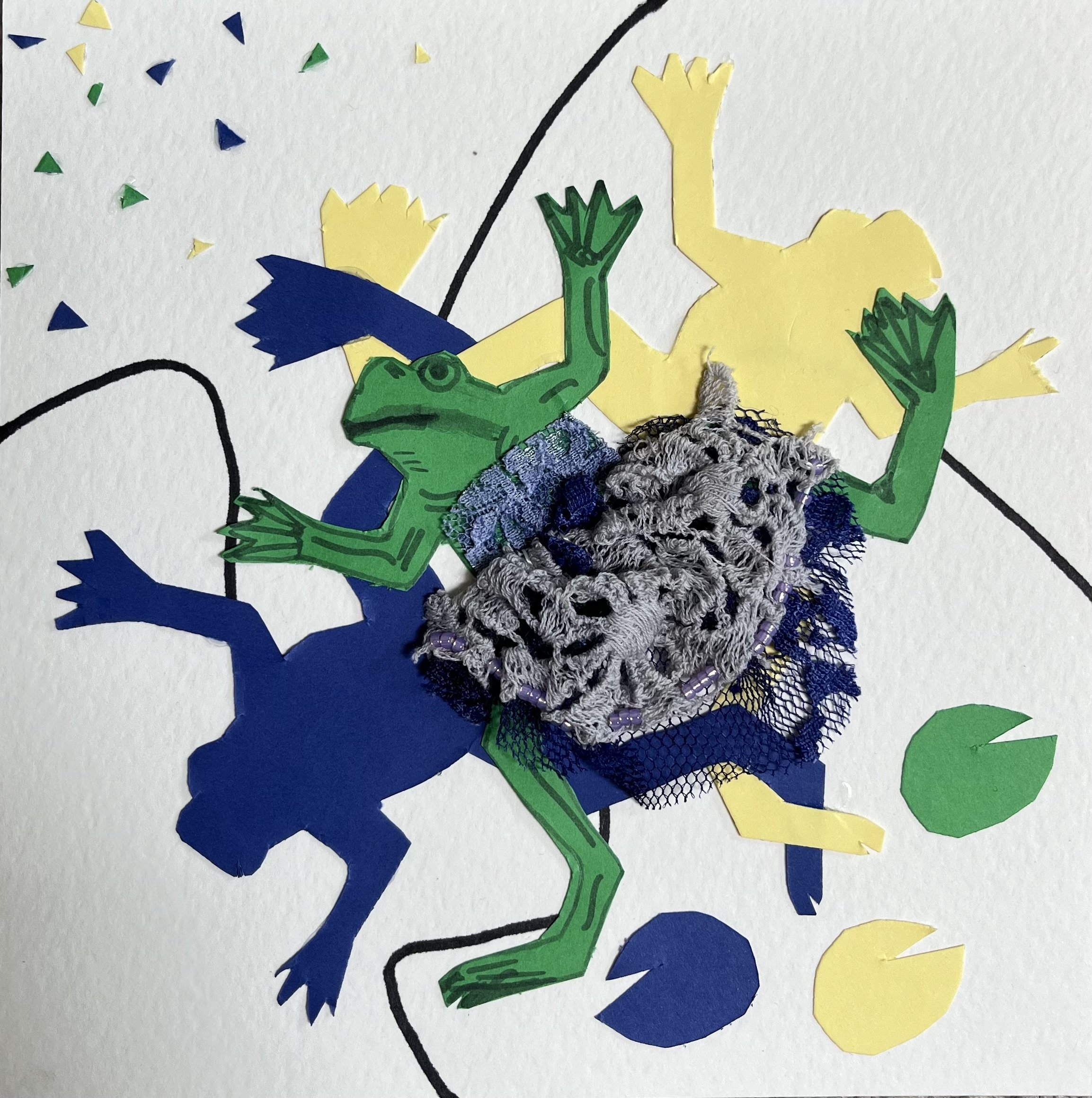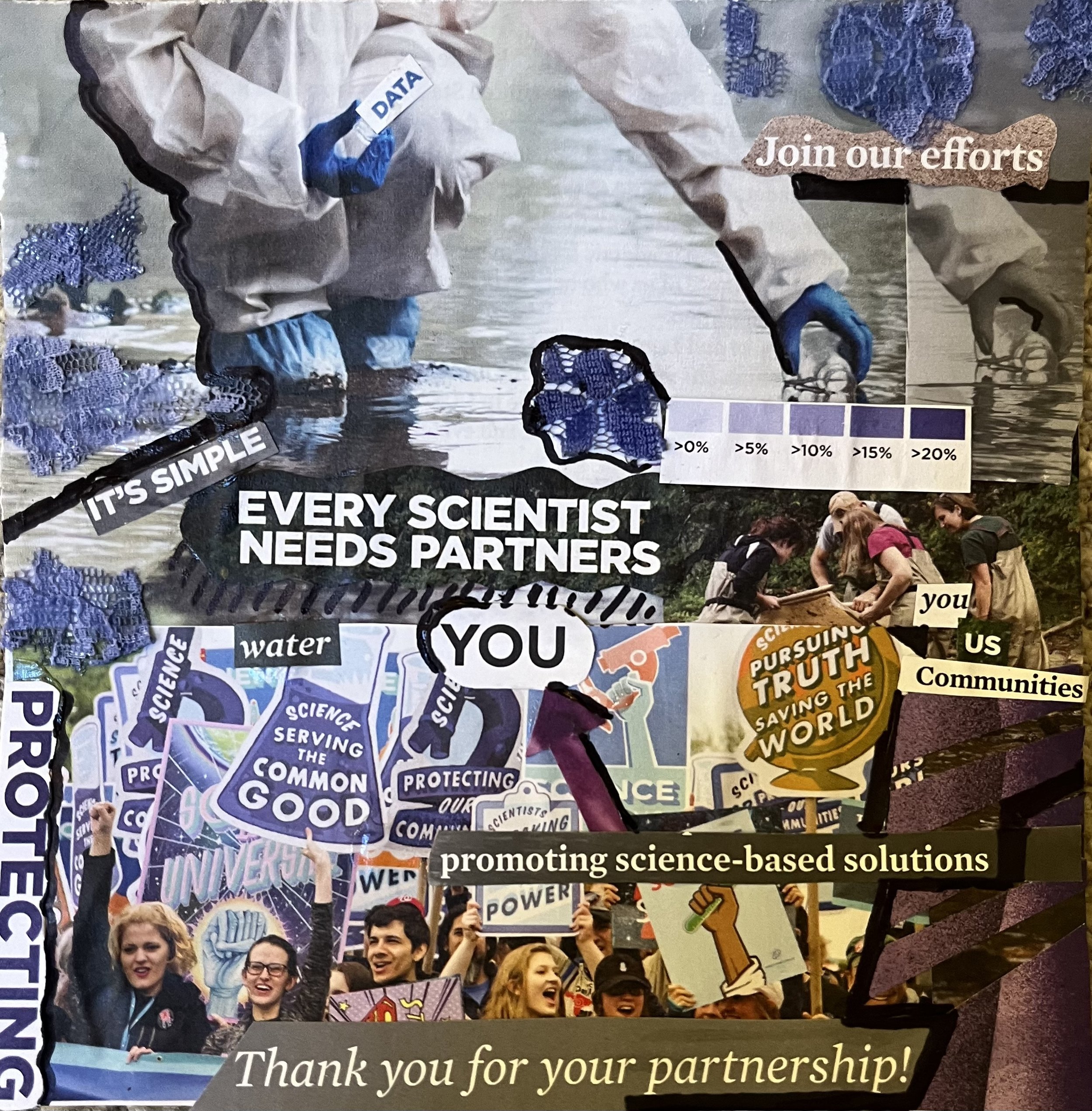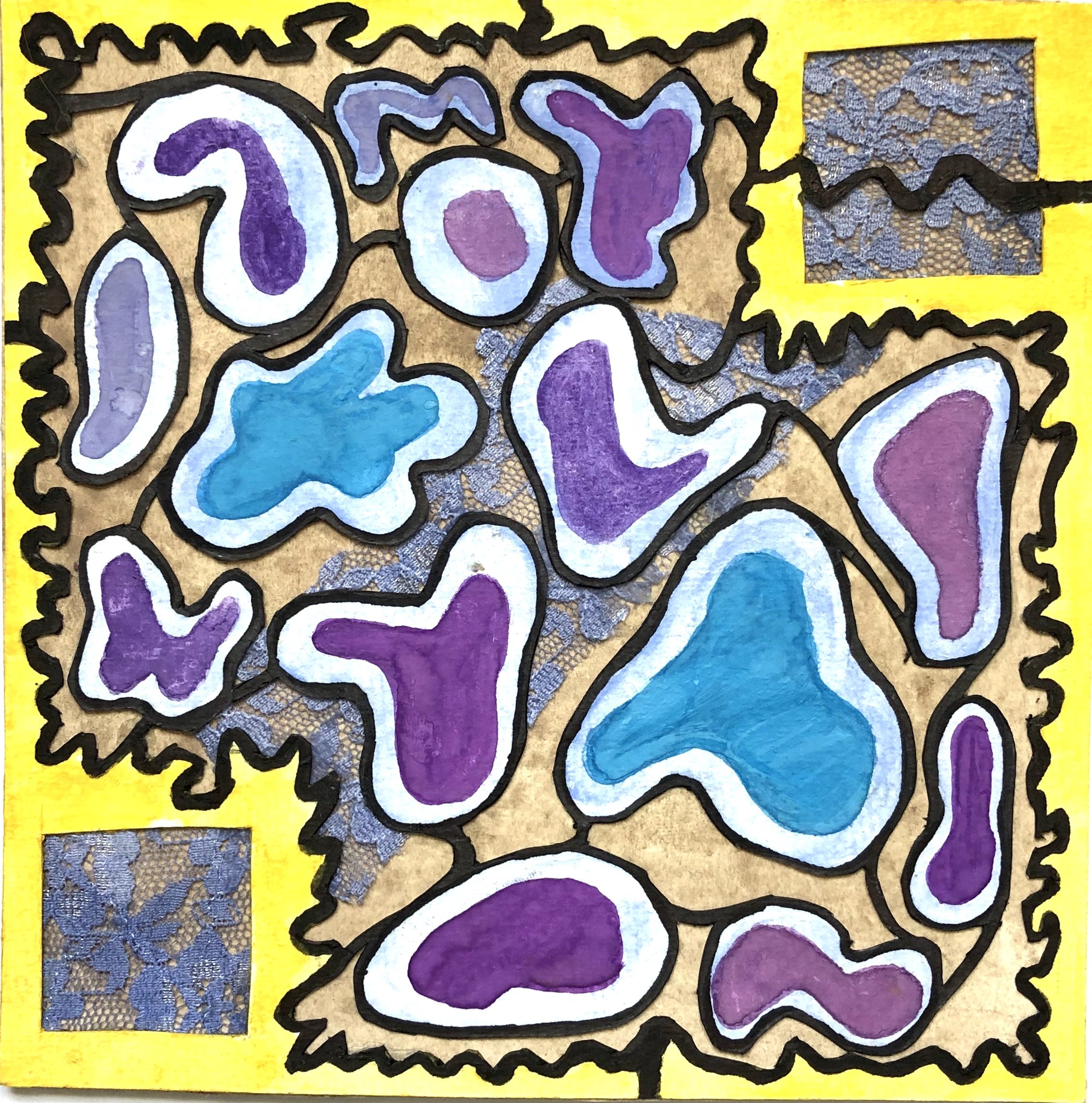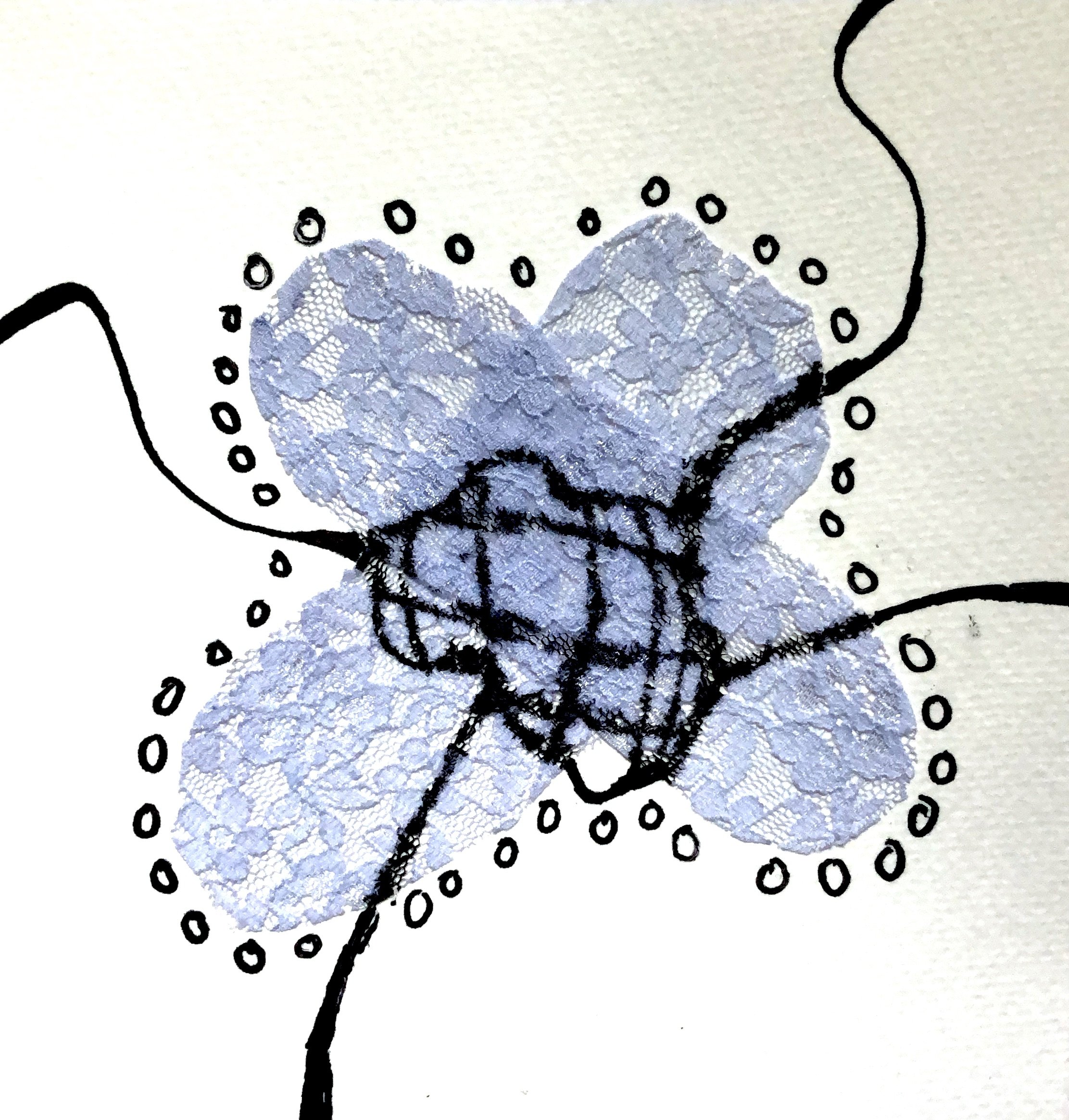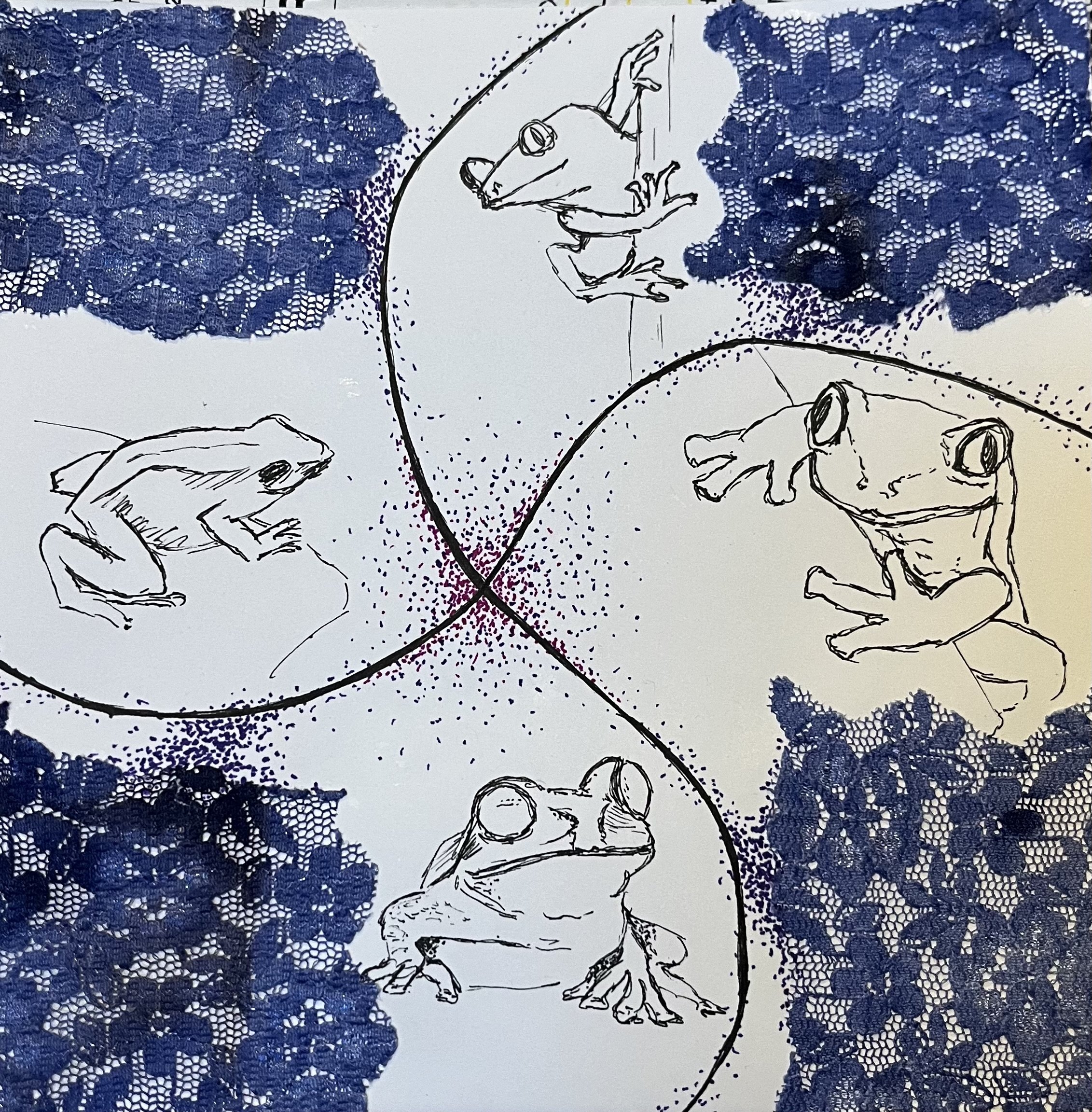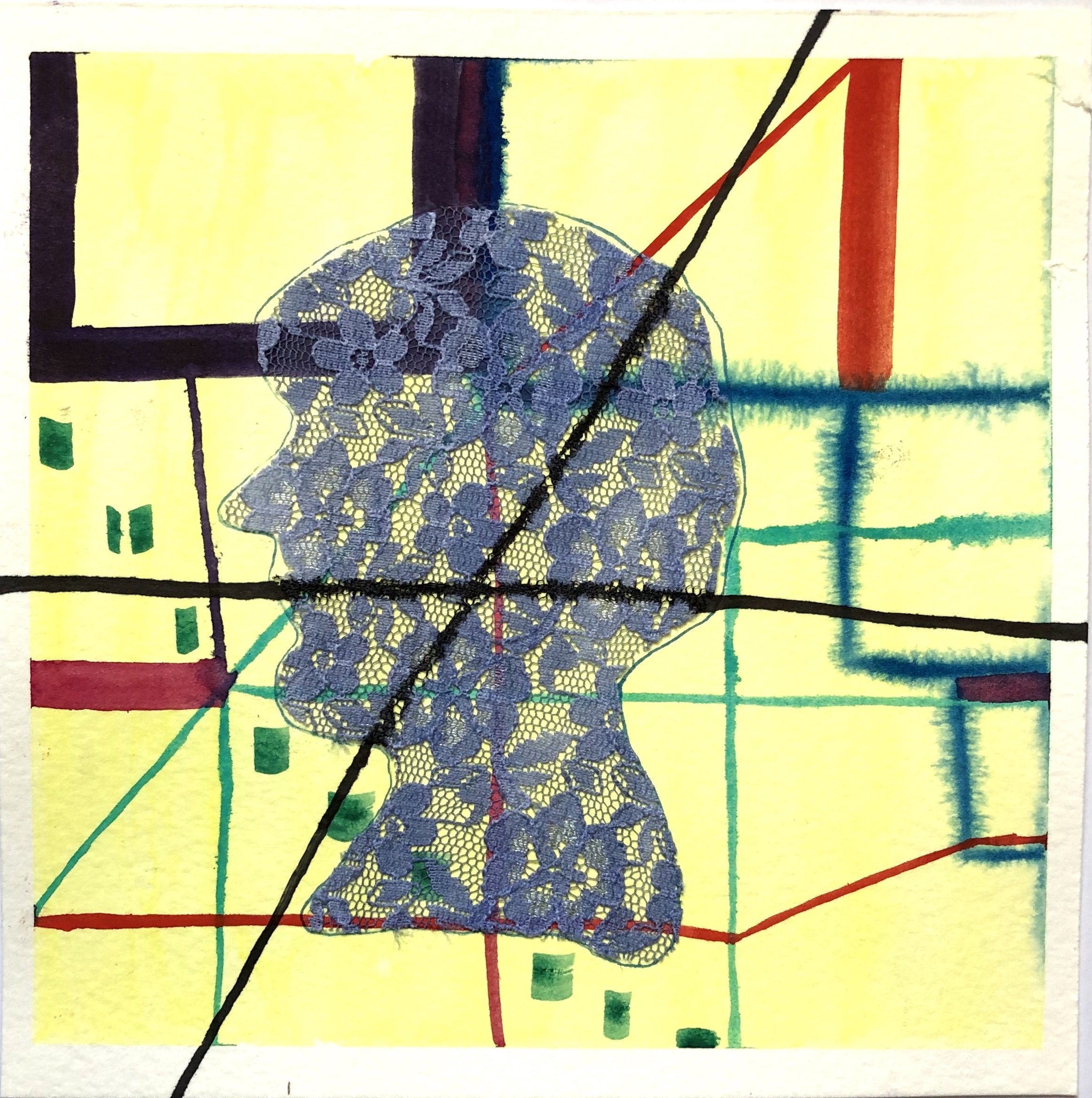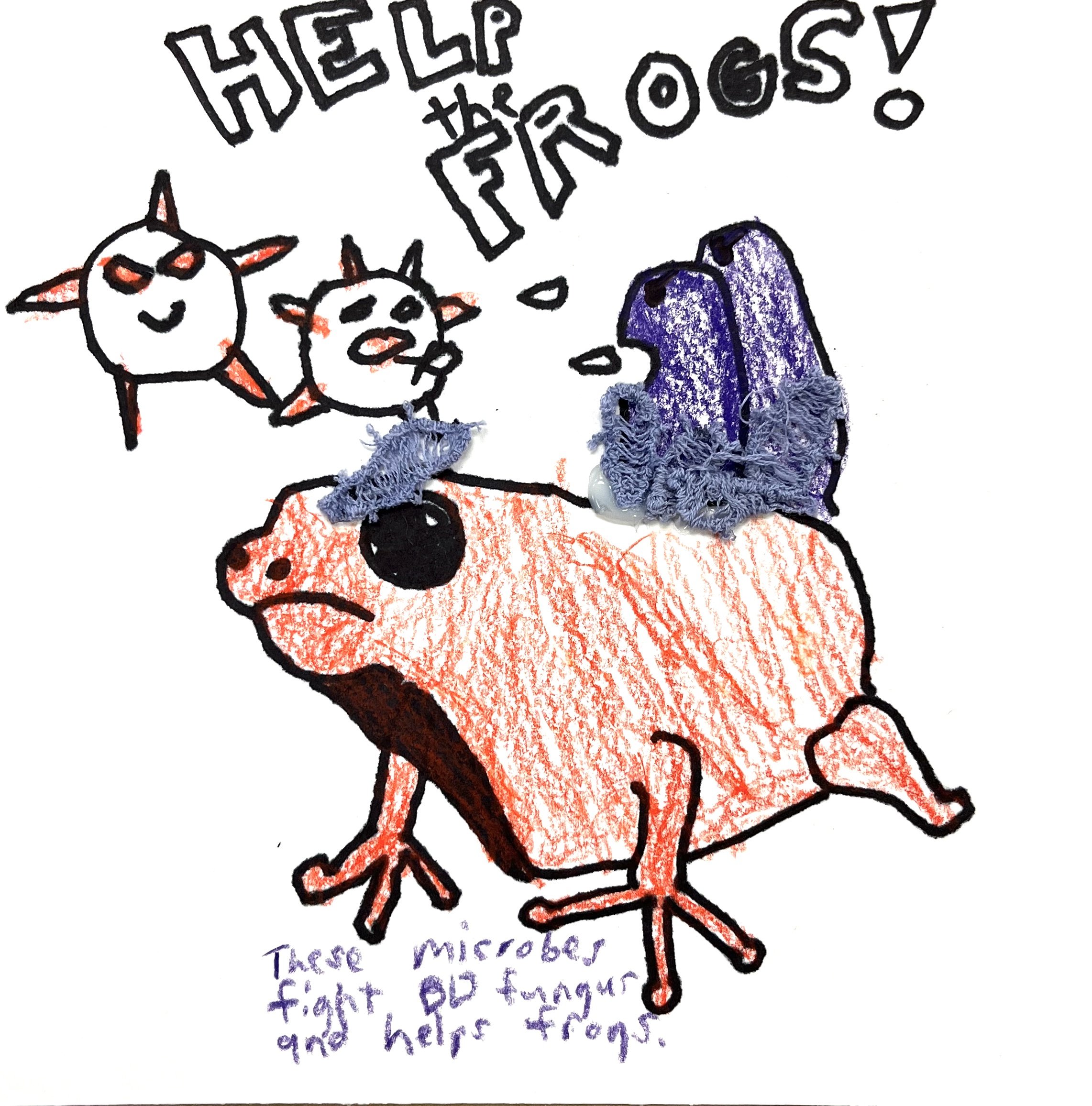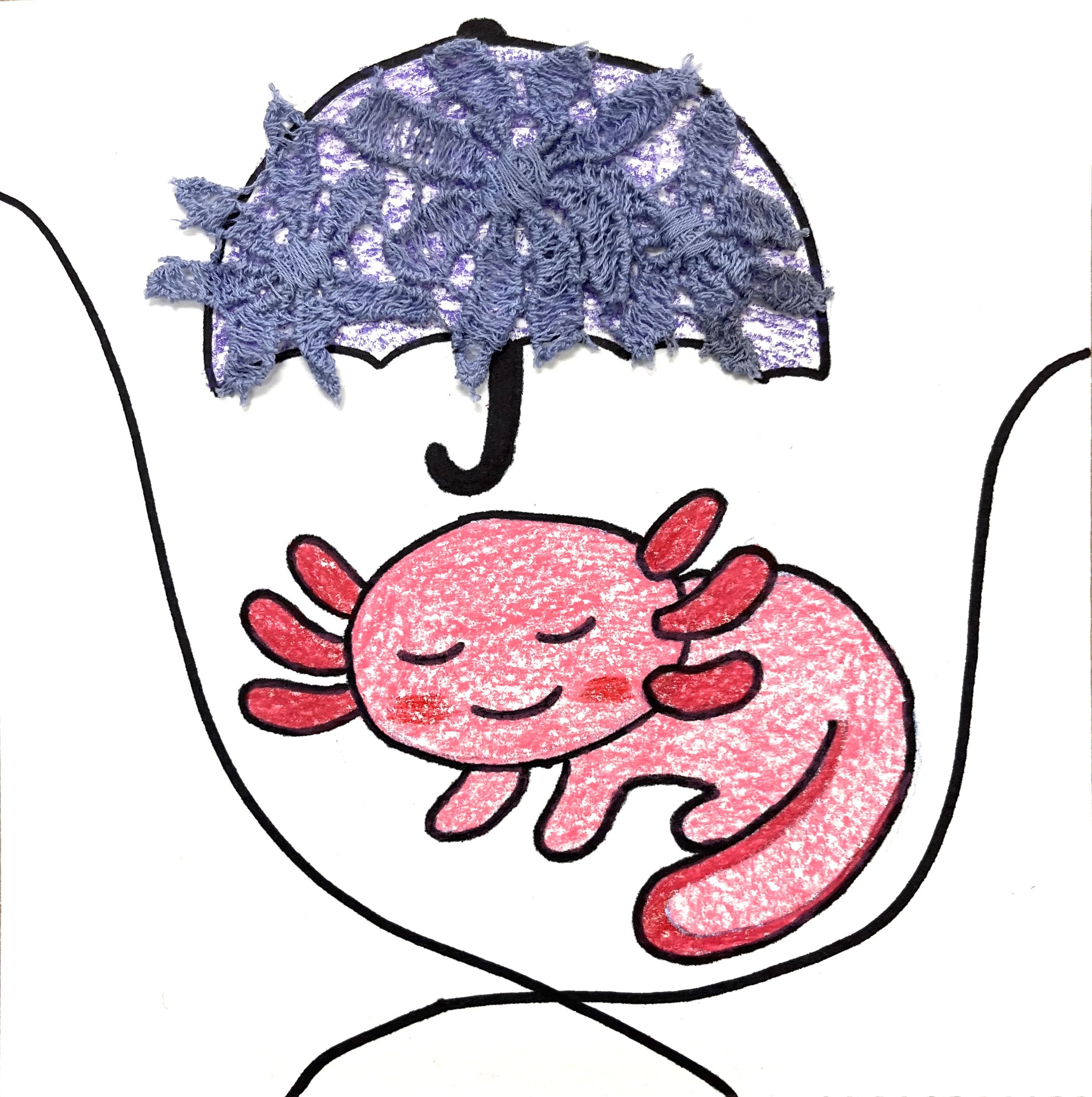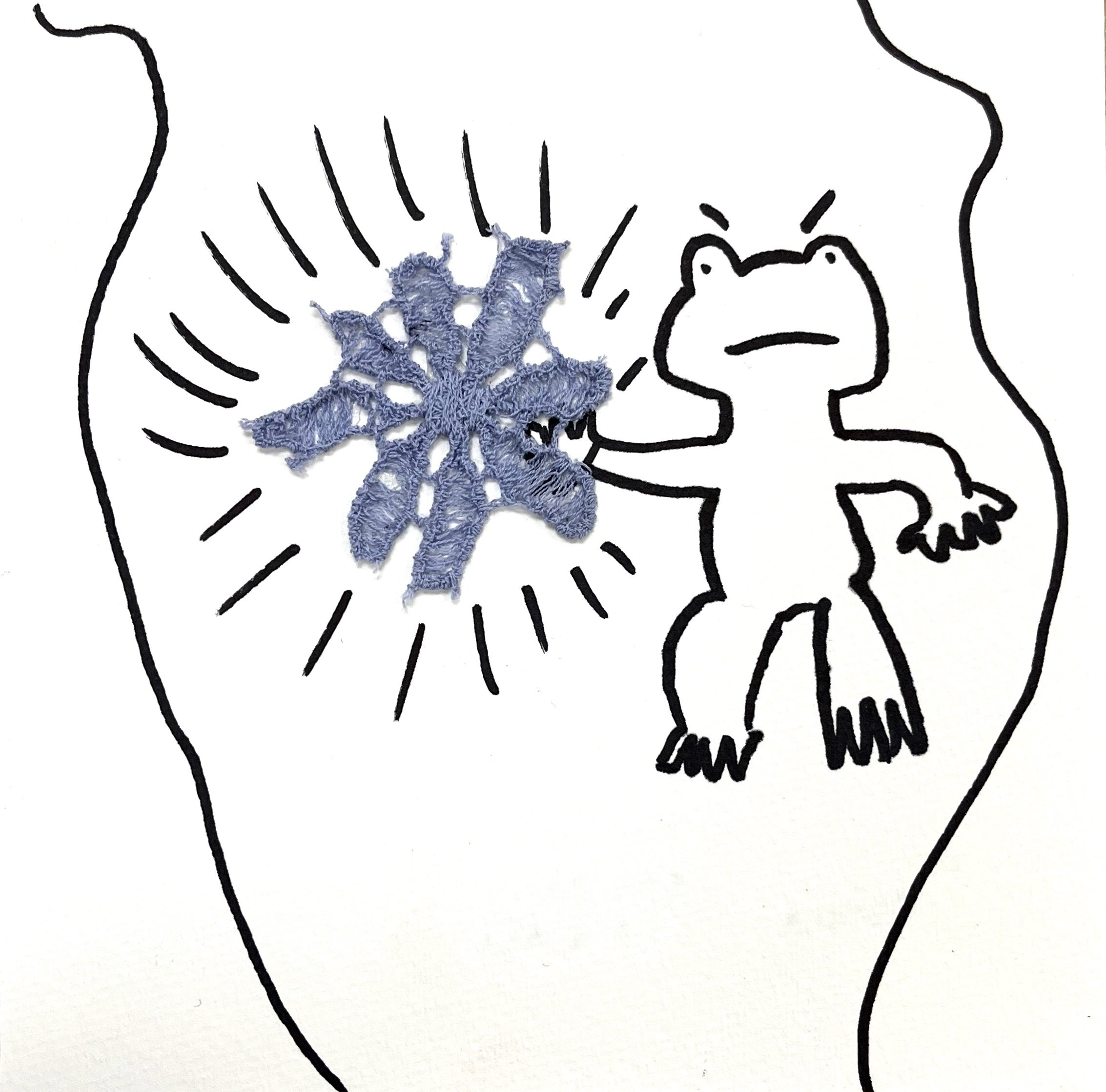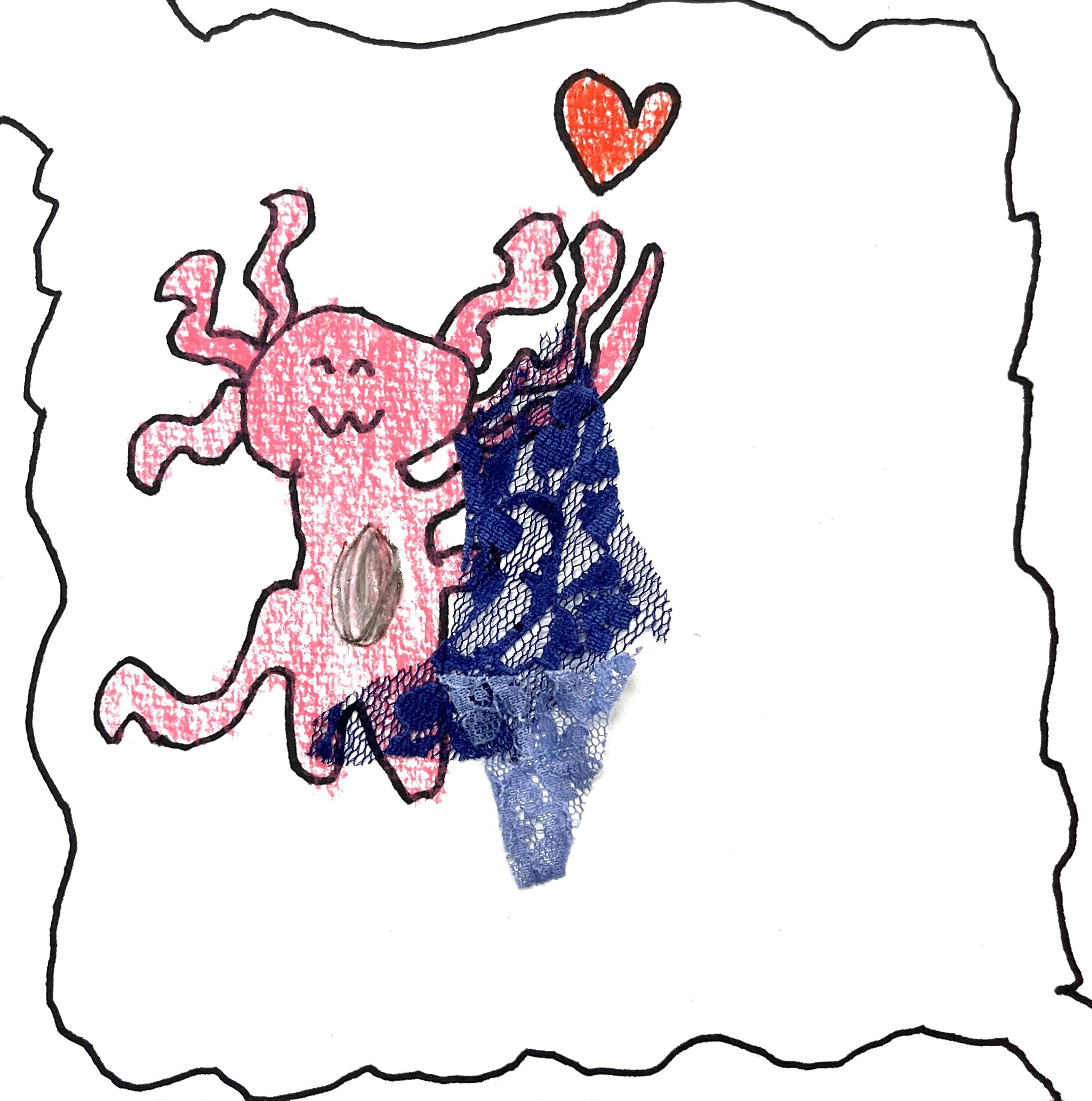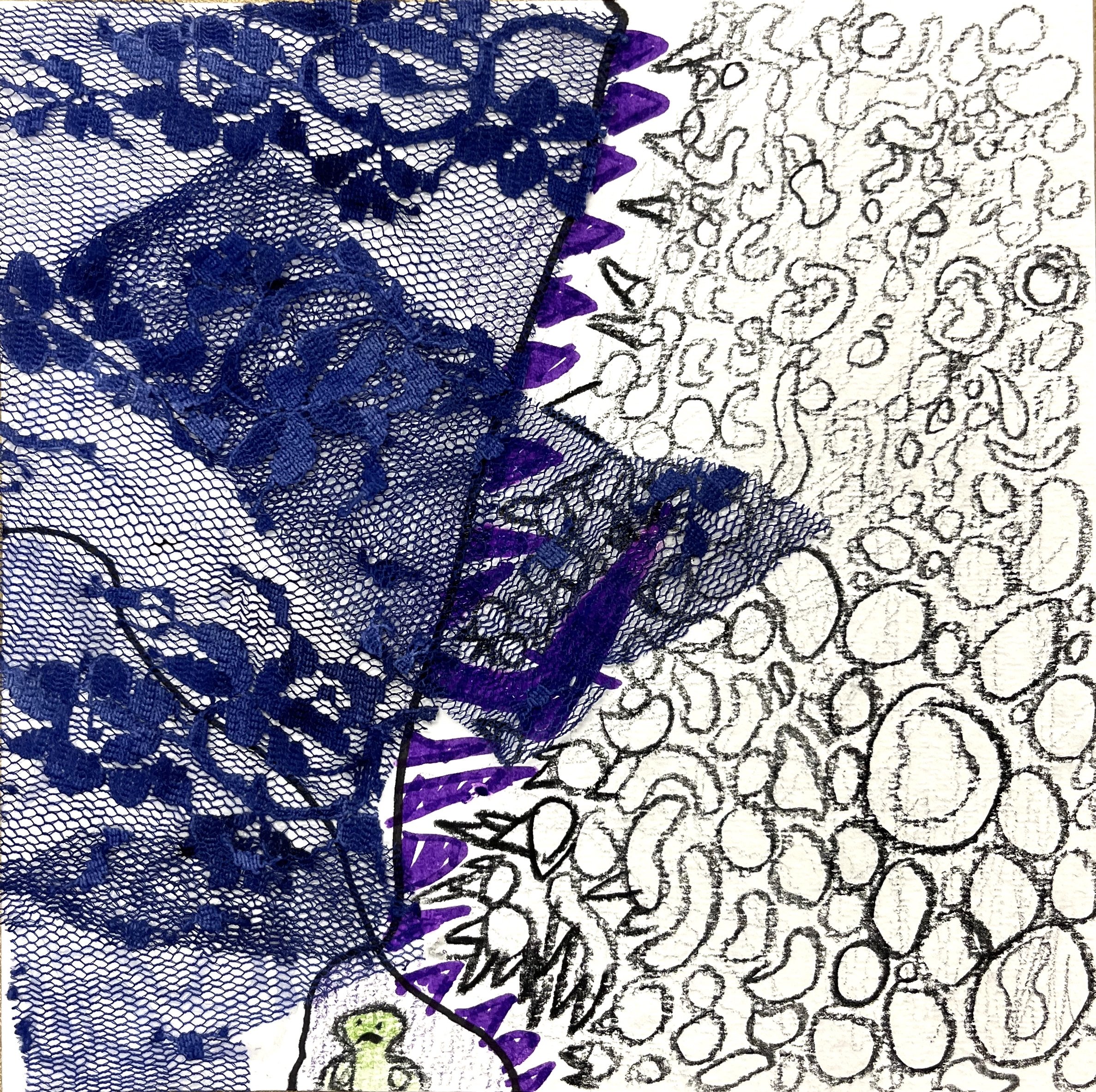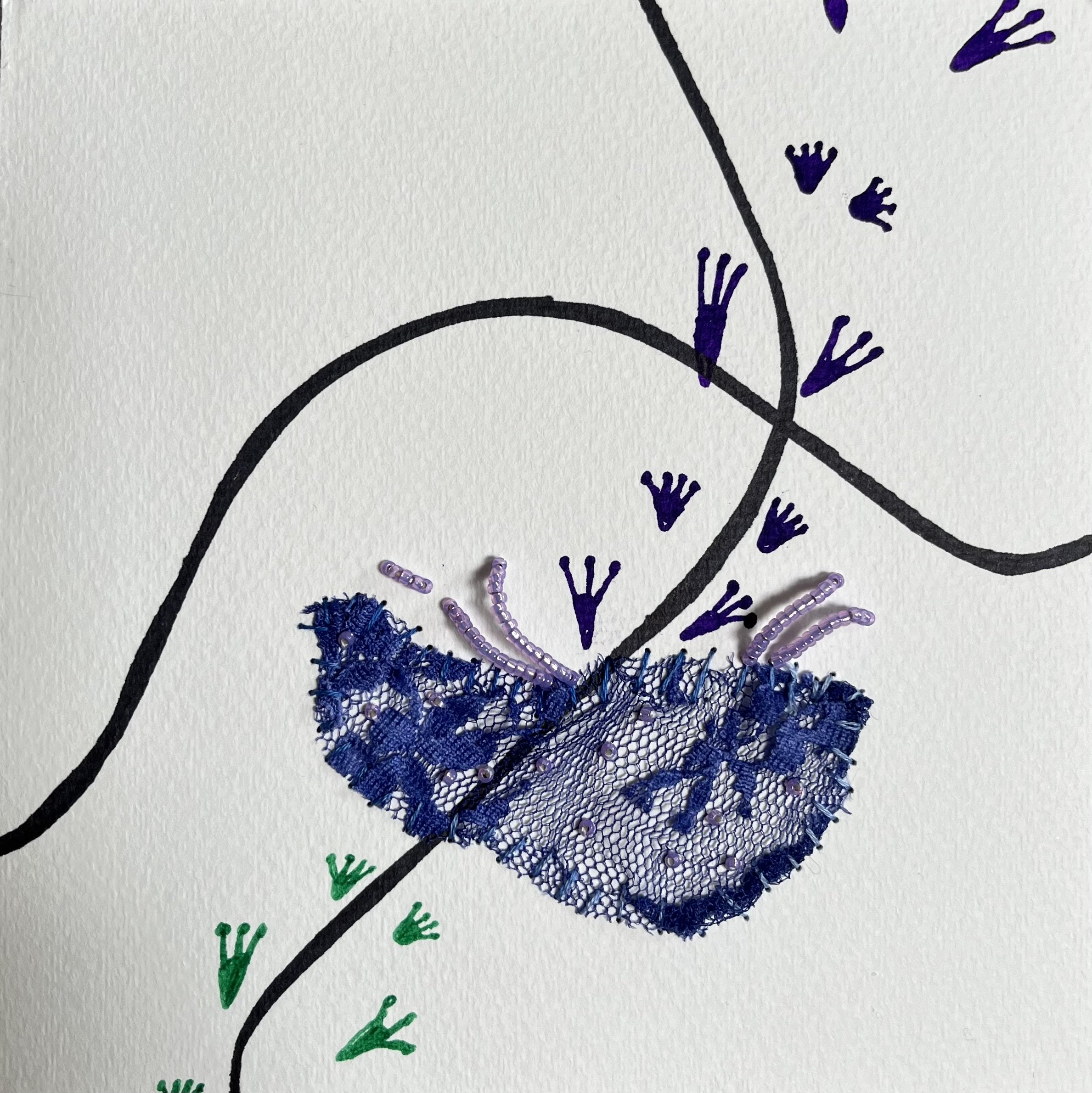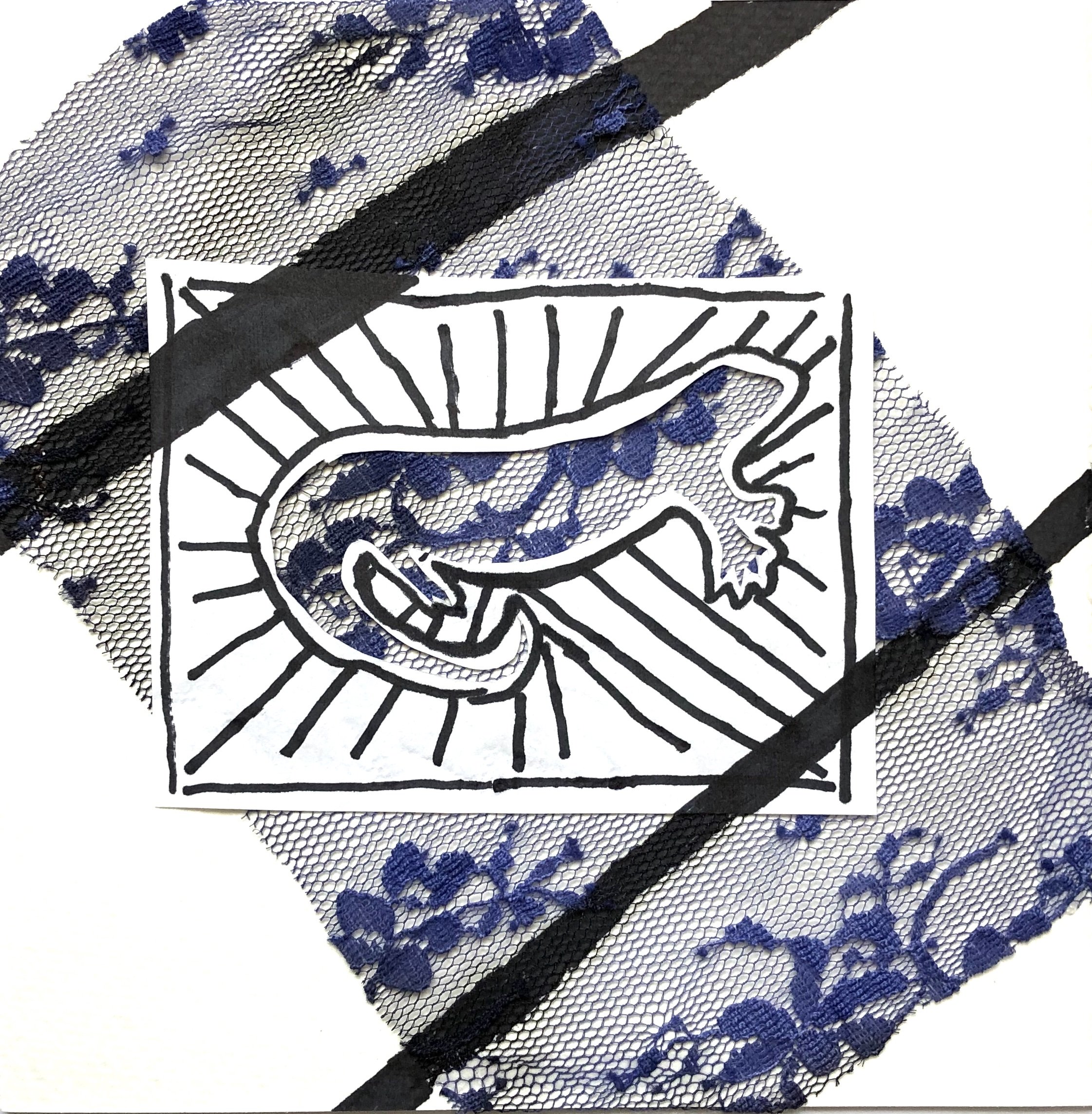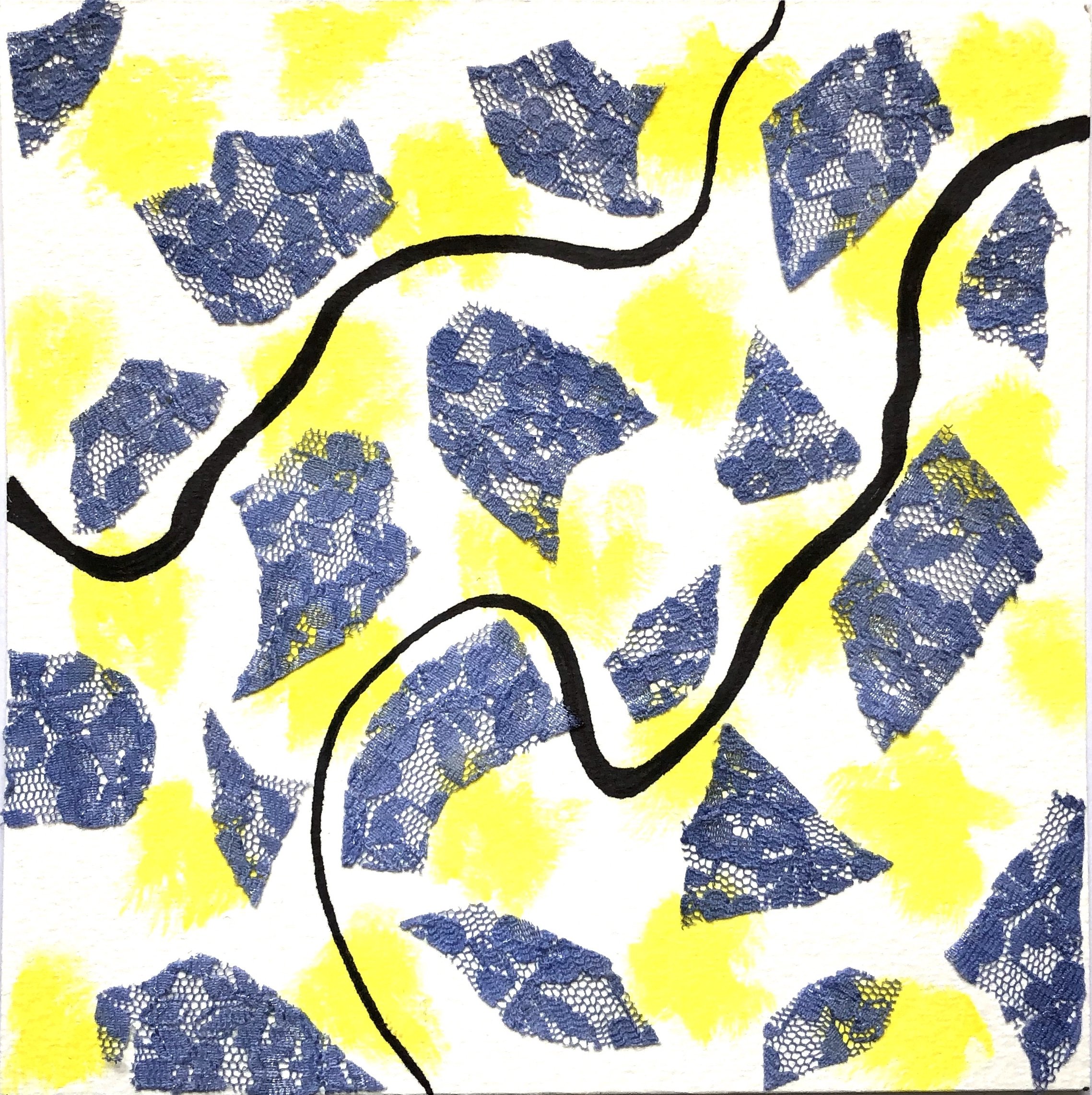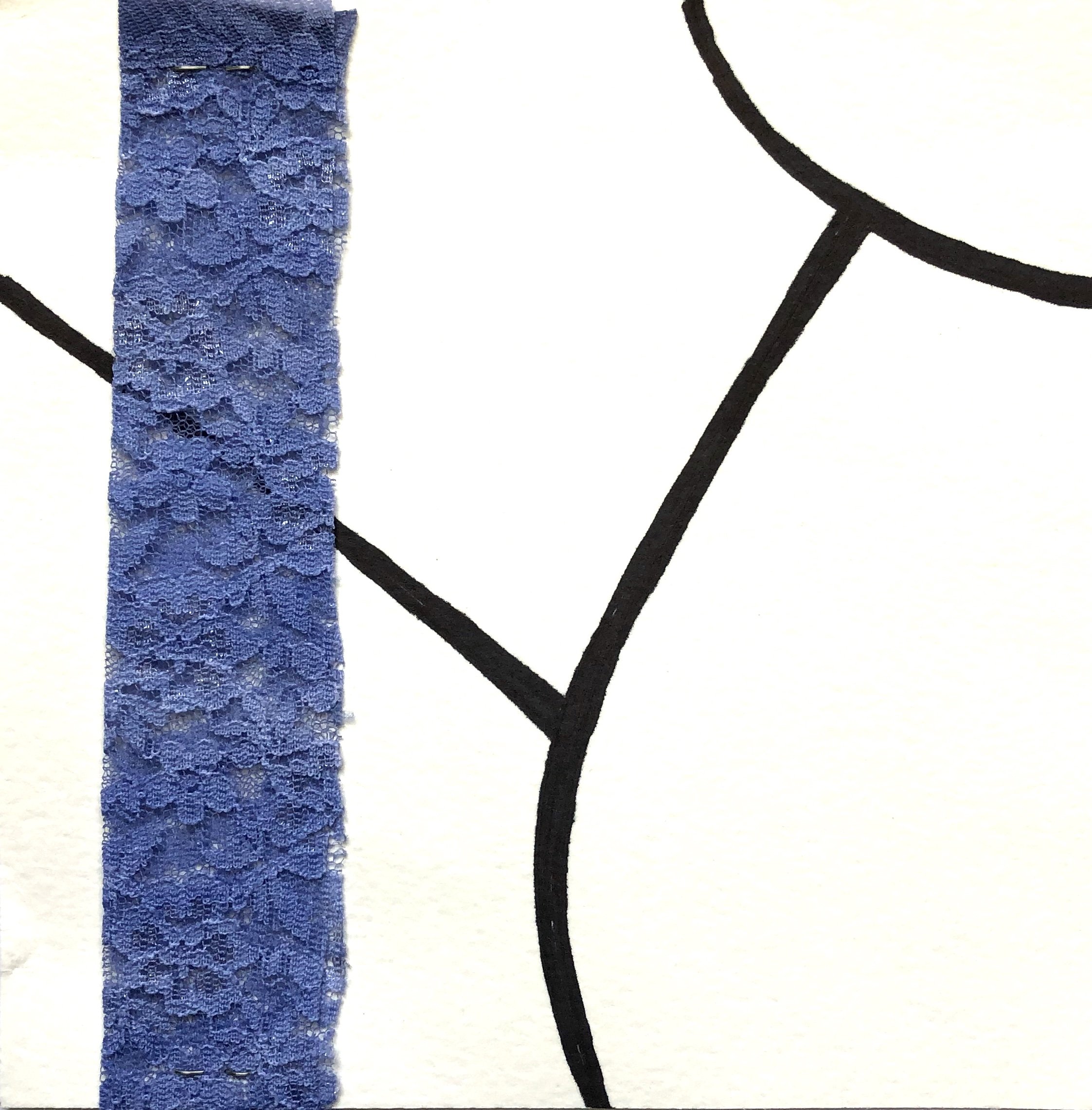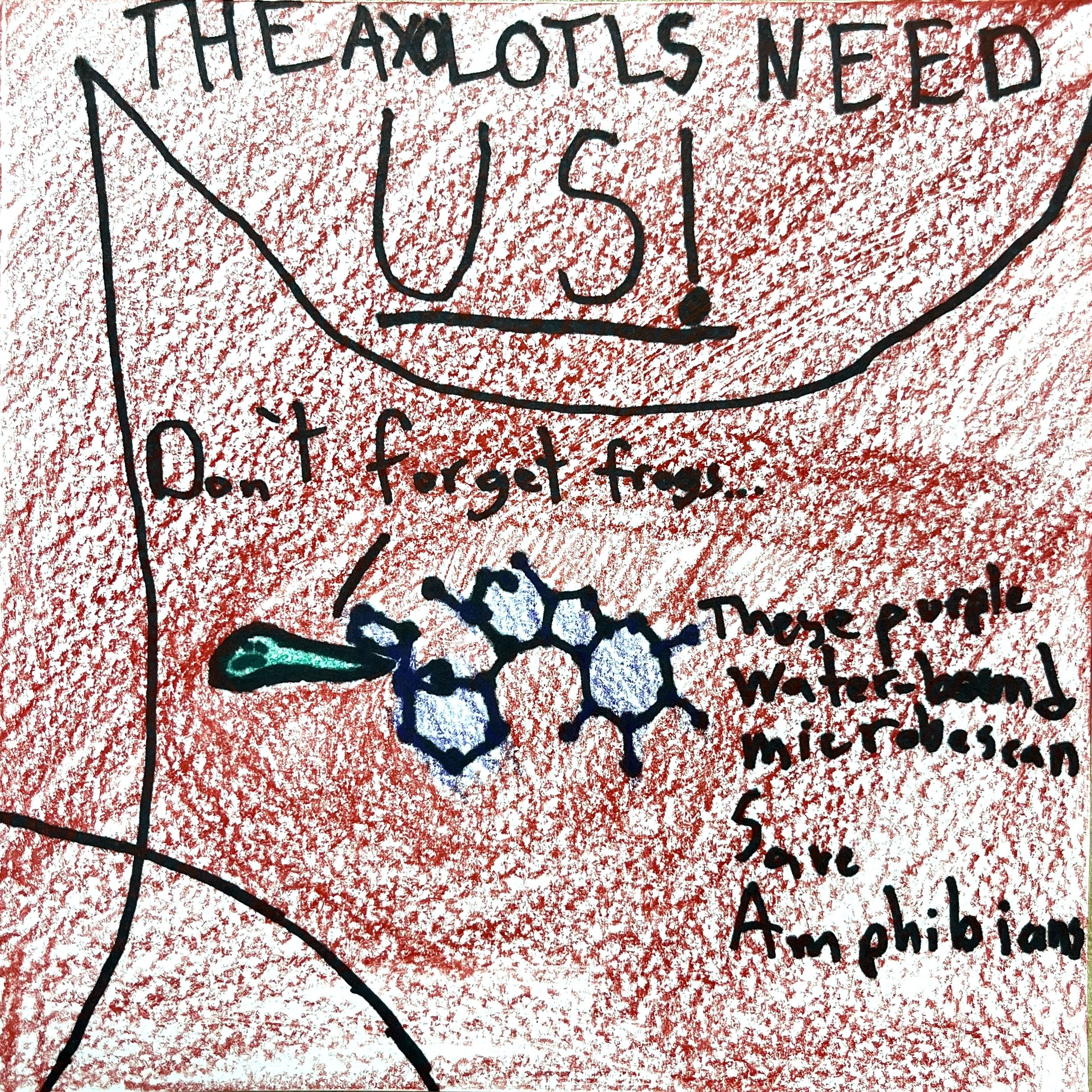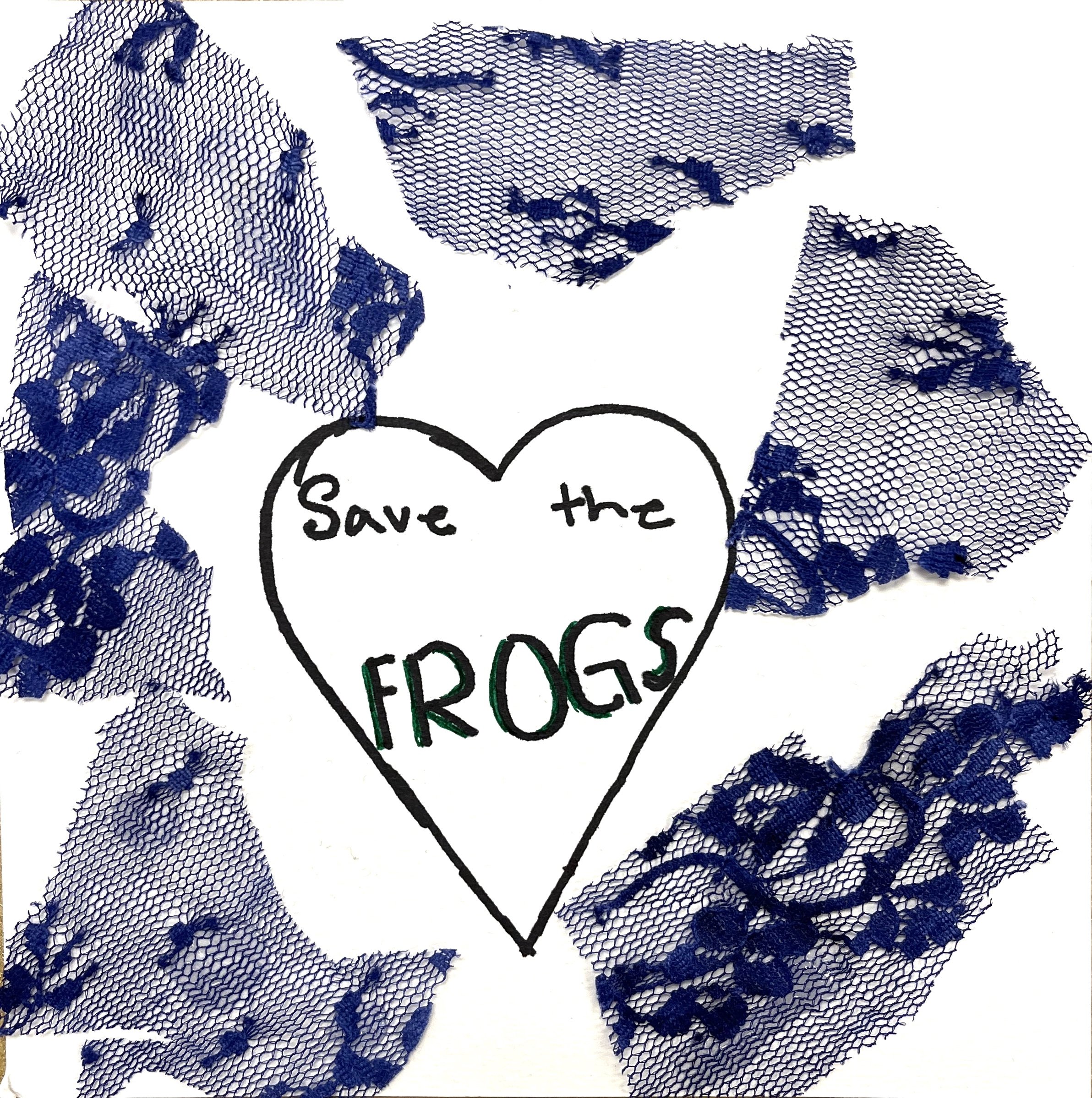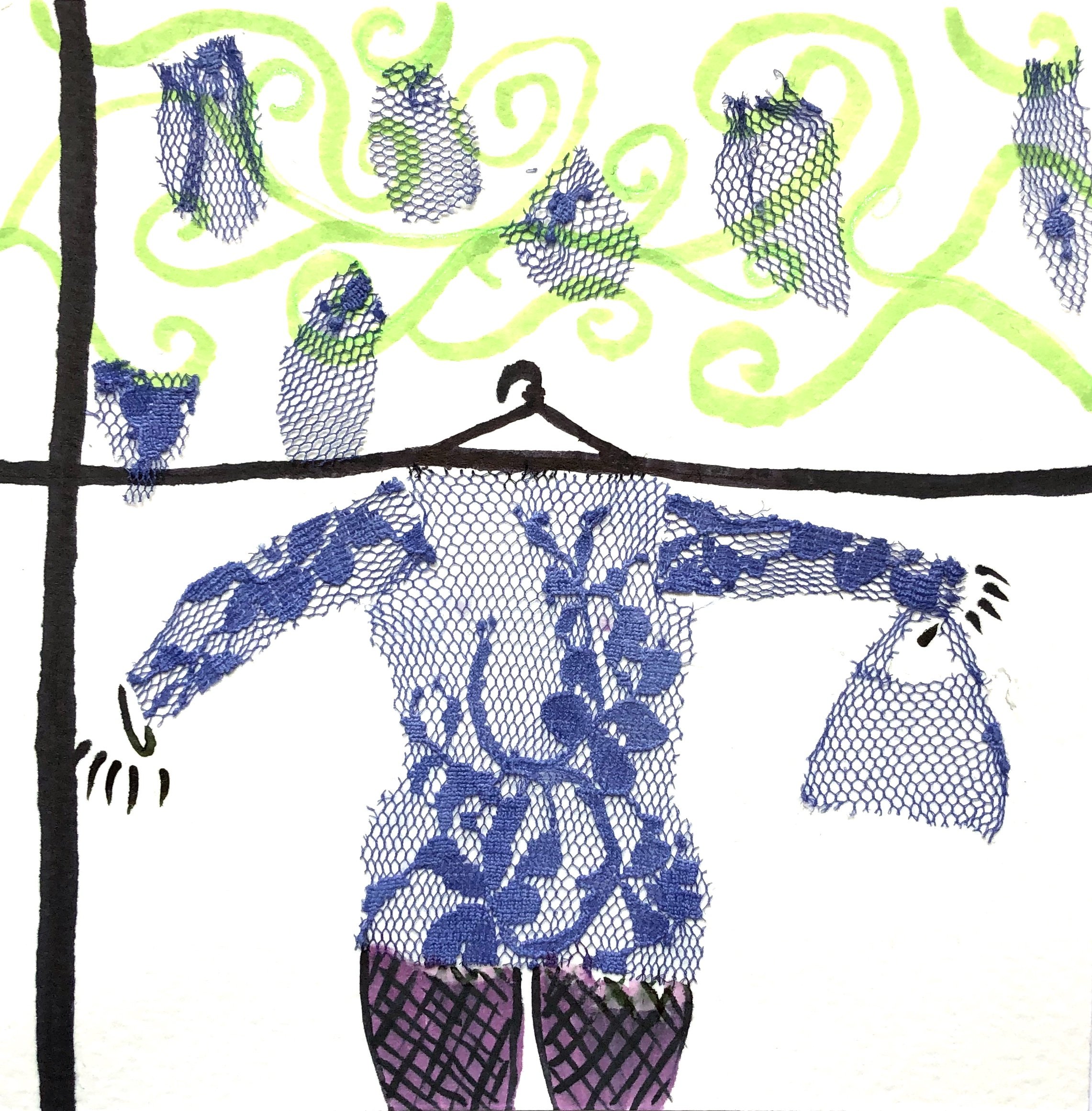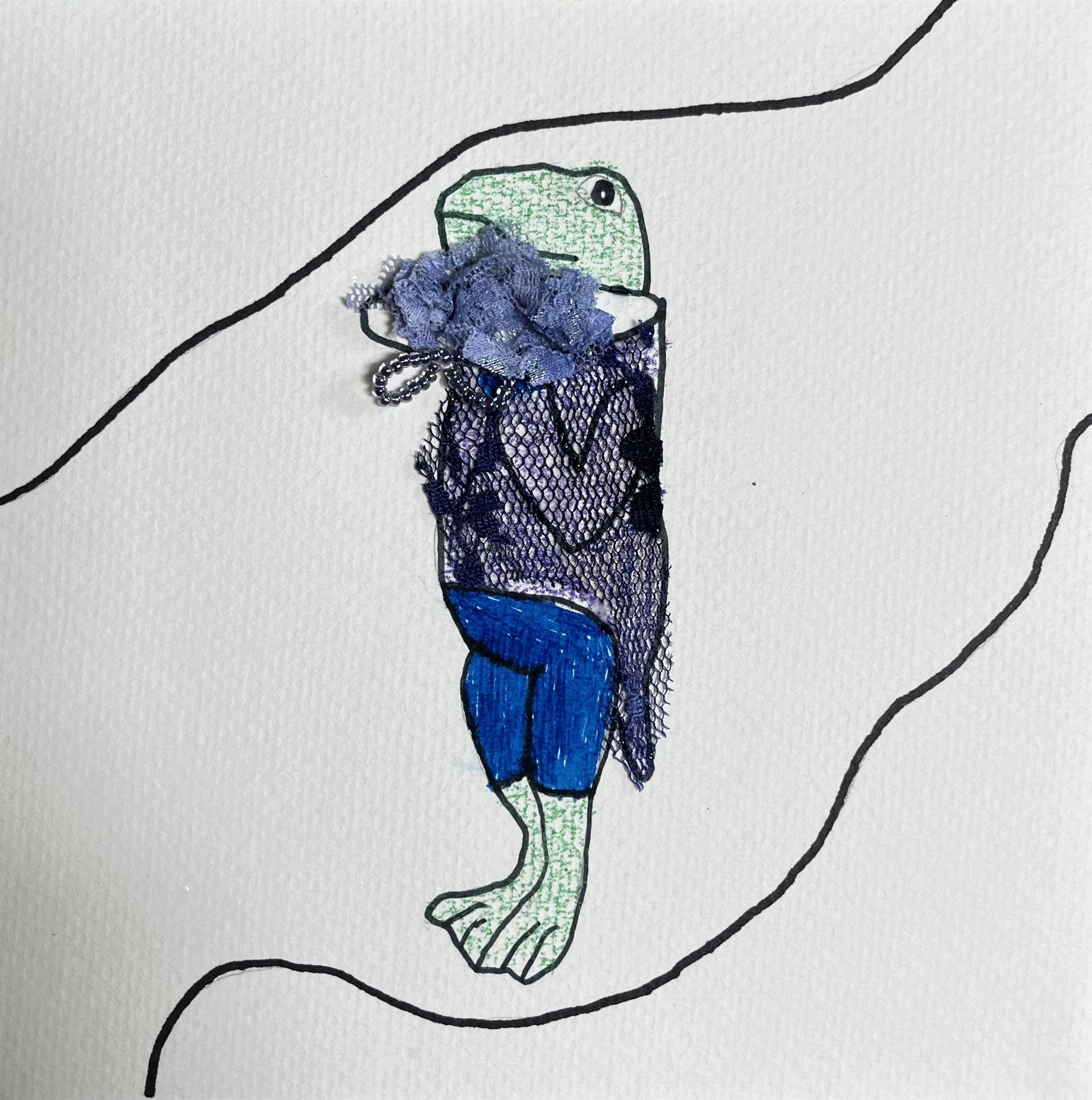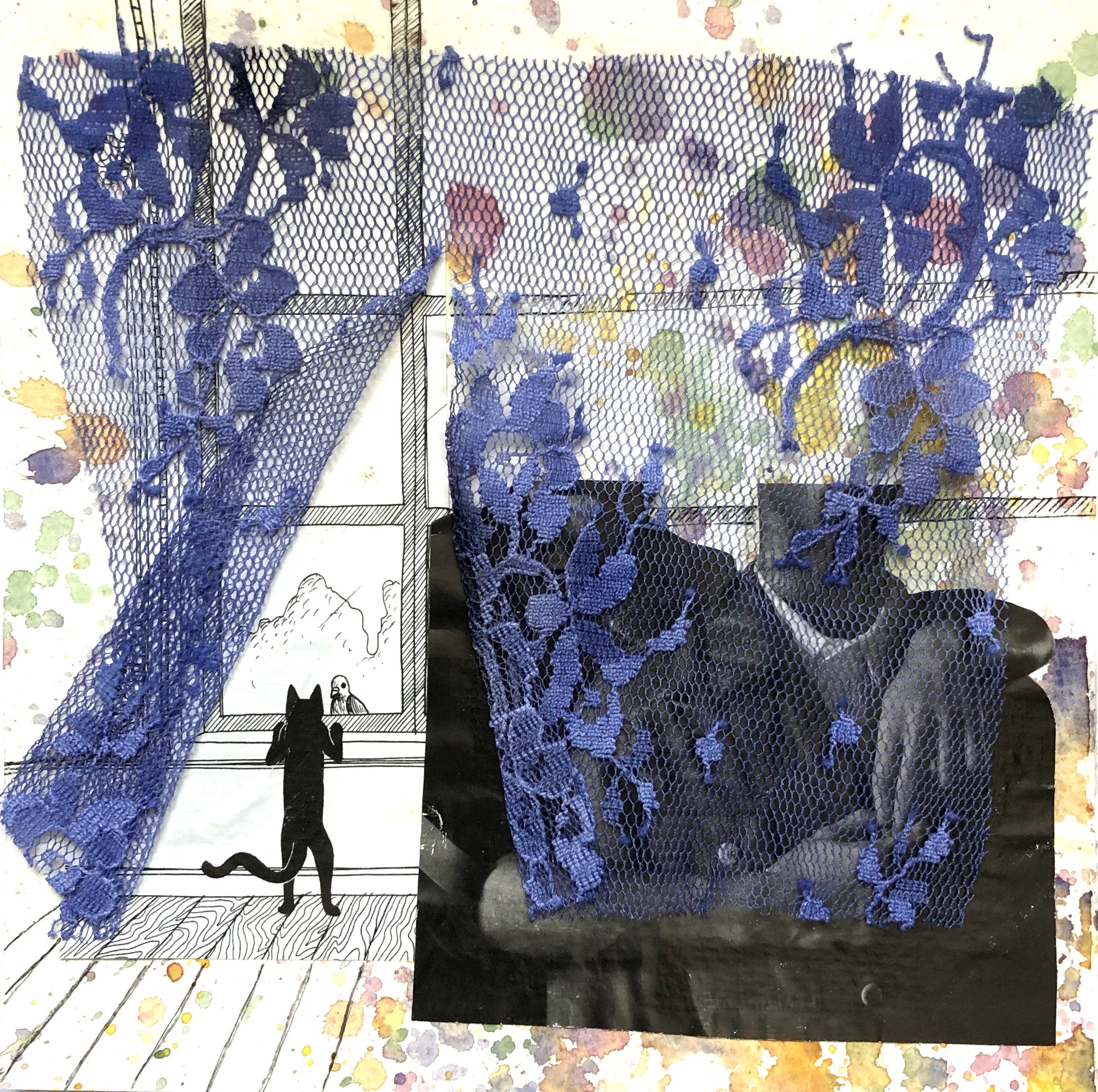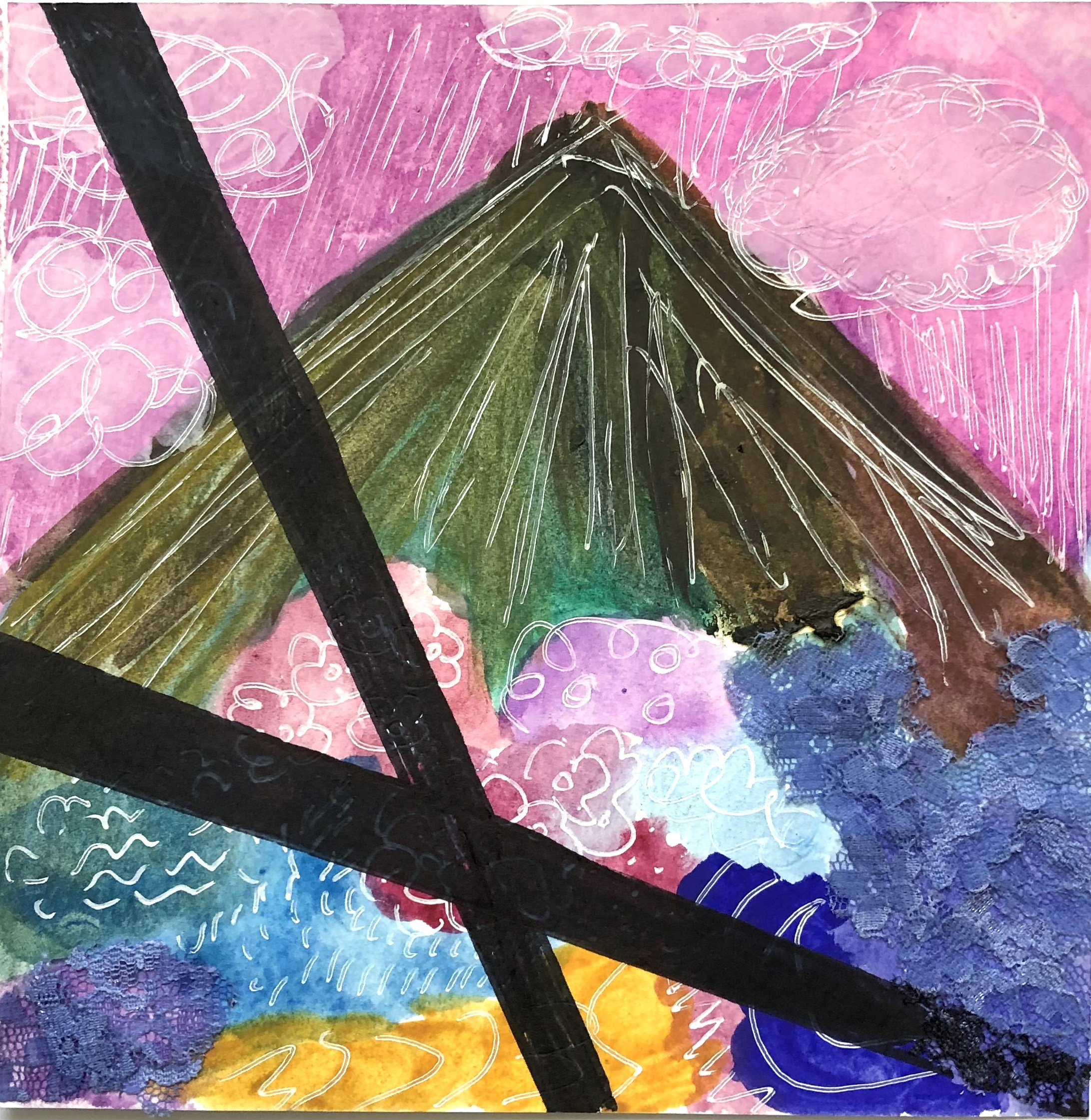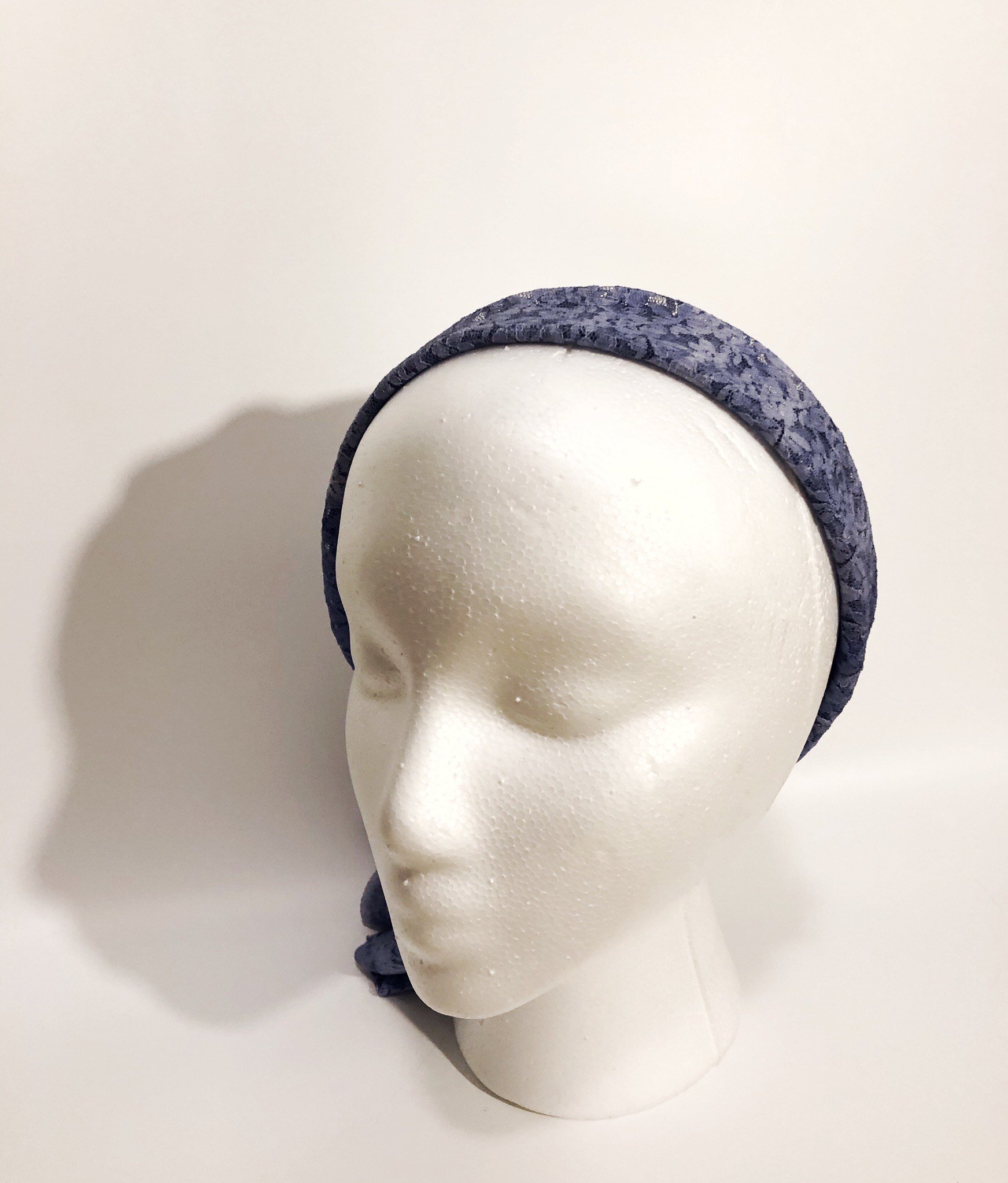
Find Purple, Frog-Saving Microbes
A participatory science (citizen science) and community bioart project to conserve amphibians
Global amphibian populations are dying from a pandemic caused by the chytrid fungus. This is a conservation crisis; however, there’s hope in the form of wild, purple-pigmented microbes that are secretly hiding in our own backyards. By partnering with Dr. Brooke Jude of Bard College, we created a participatory science, lesson plan, and community bioart project to find these purple microbes, and, ultimately, help save amphibians.
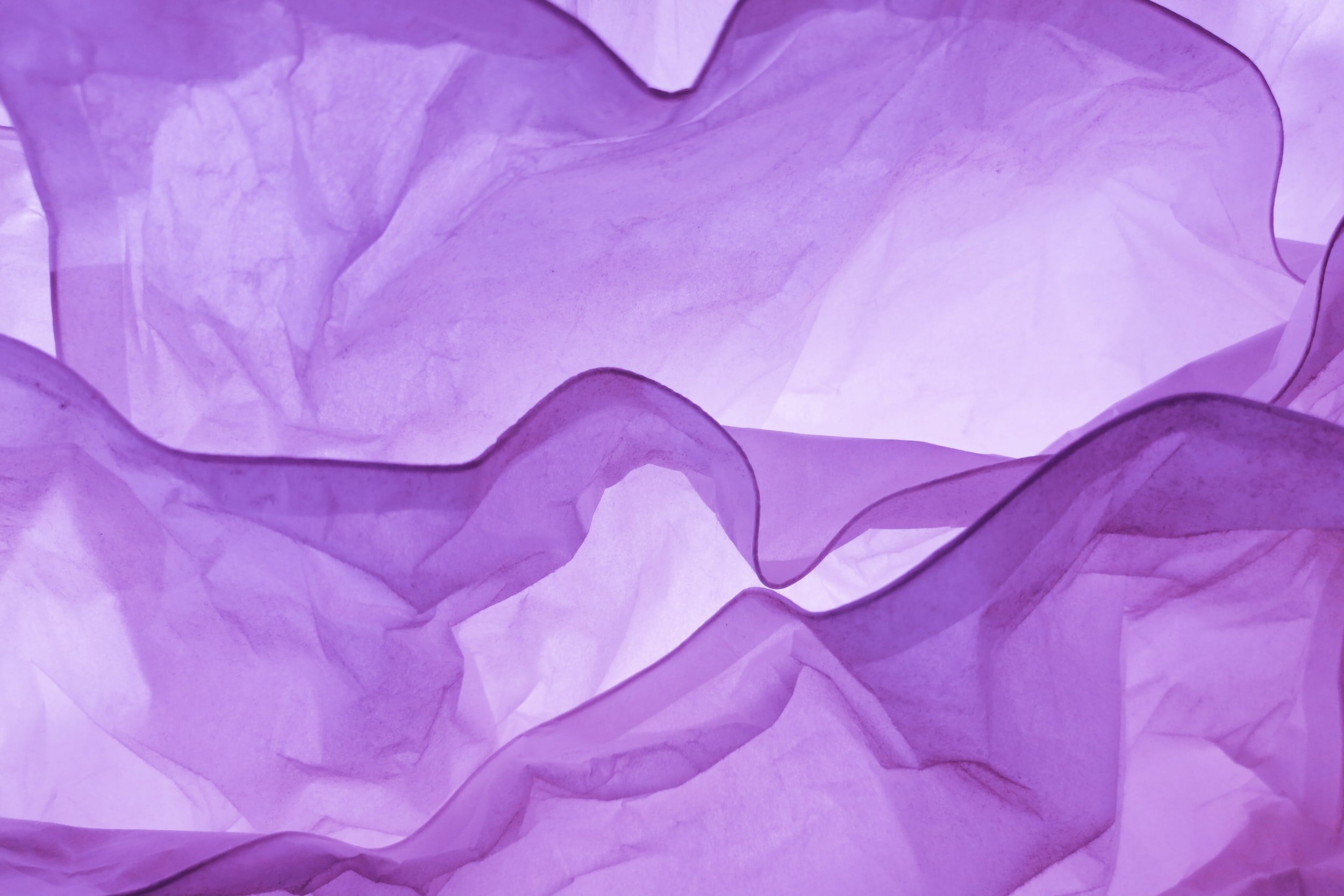
Scroll Down to Learn About This Project
The Victim
Amphibians—frogs, toads, salamanders, axolotls, newts—are facing a pandemic, not caused by a virus, but from a deadly fungus. Scientists estimate over 500 unique populations of amphibians have declined as a result of this disease and 90 species of amphibian have gone extinct because of it.
This is a conservation crisis.

The Villian
The pandemic is a chytrid disease caused by a deadly fungus, often referred to as “Bd.” It lives worldwide in water and infects the skin of amphibians. There, it chokes amphibians from the outside in. (Image features a microscopic view of this fungus and spores it creates.)

The Hero
Thankfully, a group of naturally purple-pigmented bacteria help amphibians fight off the chytrid disease. The various bacterial species, including the species Janthinobacterium lividum, live in water and soil across the globe. But when they live on amphibian skin, they can kill off Bd by producing the purple pigment—an antimicrobial molecule named “violacein.”

The Challenge
Various bacterial species can produce violacein (the purple pigment), and some can help amphibians more than others. But most remain unknown to science. We don’t know what of these species are, or where they exist.

How you can help as a citizen scientist
Citizen (Participatory) Science
Participating in our citizen science project can help researchers save amphibians. Using relatively inexpensive equipment, you can search your local waterways, grow the microbes that live there, and upload your data on whether or not you detect purple-pigmented bacteria. If you find purple-pigmented bacteria, you can then send us your water samples to help us and other researchers find new species of these helpful microbes.

How you can help as an educator
Lesson Plans and Skills Training
Are you an educator? do you have access to lab facilities, or a community laboratory space? If so, you can use the activities in our lesson plan to teach bioeconomy-relevant skills, help students gain authentic research experiences, and identify new purple-pigmented bacteria using PCR, DNA sequencing, and introductory bioinformatics skills. This plan and set of protocols was made possible by a grant from The National Geographic Society.

How you can help through art
The World’s Largest Participatory BioArt Project
These purple-pigmented bacteria can do more than protect amphibians—they can dye fabric purple without a mordant (a setting agent that often requires large amounts of water resources). Using fabric dyed with these natural microbes—and then sterilized to remove the living bacterial cells— we’re asking people to contribute squares to our participatory art project. This will be the largest participatory BioArt project in the world—an artwork created by microbes and humans, students and professionals, artists and scientists—everyone! It will ultimately help bring awareness to the amphibian crisis and to the beneficial powers of microbes.

Schematic Summary of The Purple Microbe Project
Schematic created with Biorender.com

Wait…microbes come in many different colors?
Other microbes found in the environment besides these violacein-producing bacteria can make a rainbow of different natural pigments. Want to search for the Pantone colors of lichens? Check out our other projects, such as the Lichen Adventure. Interested in learning more about microbial pigments through crayon labels and a bit of whimsy? visit our Microbe Crayon Project. Or read our one-page summary of microbial pigments here.

Visit this project in our Virtual Reality Gallery
Instructions to visit the gallery in a desktop browser:
Accept (or decline) the cookie settings, then use your cursor to navigate this virtual art gallery. Click on the various pieces to learn more about this project and find out how you can participate. You can also take the guided tour (by clicking the play button at the bottom of the gallery) to take a guided tour through the gallery—and the entire project.
Navigating the gallery in VR:
This website is not optimized for mobile devices. To navigate the space in true virtual reality, visit the link below, or at ArtSteps.com and search for “The Purple Microbe Project” under exhibitions. We are in the process of increasing the accessibility of the material featured on this website. We thank you for your patience as we continue to improve on this front.
Stills from the Virtual Reality Gallery

The Lesson Plan
The Lesson Plan
Using this highly modular lesson plan, advanced middle school, high school students, or undergraduates in remote, hybrid, or in-class settings can participate in this research and contribute to this participatory art project. Download the lesson plan for instructor guidelines, best practices, teaching standard alignments, and activity sheets. This lesson is an extension of the work published by Agate and colleagues.
Additional Resources

Project Support
Grants and In-Kind Support
The high school lesson plan associated with this project is made possible in part by a grant from the National Geographic Society’s COVID-19 Remote Learning Emergency Fund for Educators to Anne Madden and Brooke Jude
Additional support for research was provided by The Explorers Club.
Grant and In-kind support for our Moroccan Natural Dye project extension (details below) provided by One Earth (grant led by ATW80Fabrics) and Bag Balm (respectively).
Contact us to find out how you can support these education and discovery efforts

Team
The Team
This citizen science project is led, and was conceptualized by, Dr. Brooke Jude of Bard College. This broader project—including extensions and the participatory bioart project—was co-created, amplified, and accelerated by Dr. Anne A. Madden of The Microbe Institute. Educator Tegan Morton was instrumental in co-creating the lesson plan. We thank Joanne Arnold and Kristina Skillin for advising us on aspects of the project.
The photo depicts Drs. Anne A. Madden (Left) and Brooke Jude (Right).

Project Extensions
Natural Dyes for Moroccan Carpet Weavers: From Soil to Carpet
An international team of weavers, scientists, and artisans hunt for natural dyes for Moroccan carpet weavers
Our team parntered with international organizations, led by the nonprofit ATW80F, and supported by a grant from Daughters for Earth (One Earth) to search for natural dyes—including those from microbes—to make carpet dying in Morocco safer for the artisans and more sustainable for the planet.
Learn more about the project here.
At the conclusion of this project, we created an open-source book about this project—including natural dye protocols—in English or Arabic. Special thanks to our interns, Alima and Maymuna Galbert, for helping us and translating these documents into Arabic.
Hacking Nature & Wearables:
The Purple Partnership Hat
A wearable featuring bioactive pigments that are naturally antimicrobial. This hat is made from cloth dyed with naturally purple-pigmented microbes. These microbes were discovered as part of this citizen science research project. The cloth was then dyed using these microbes as part of a community art project. The scraps of this project were used to make this hat.
The pigment from these microbes is violacein, a natural antibiotic, and antifungal. It has impregnated this cloth. This hat— a bioactive wearable—can be seen as a form of protection for the wearer (as the fabric has been found in some studies to retain its antimicrobial activity), but it also serves as a hook for a broader discussion about how these microbes can be the source of natural genetic pathways that can be used by the synthetic biology community to protect us—-and amphibians—in the future. This hat won the 2021 Hacker Runway People’s Choice Award at DEFCON 29 (The world’s Largest Hacker Conference).
The Violacein Dye Project:
Designer Kate Reed uses purple microbes to green fashion
Project Blurb in the artist’s own words:
“The textile dyeing process is one of the most polluting processes in the world. Chemical dyes are used until the color is no longer consistent, then the liquid chemical dye is thrown away, with little regard to where it goes and the harm that it creates.
Bacteria have the unique ability to disrupt this harmful process, but the research is elusive. I reached out to Boslab, a community-built molecular biology lab, and together we tried to grow different bacteria onto textiles - but none of them worked, because we hadn’t found the right microbes to work with.
When we learned of the Purple Microbe Project we immediately reached out, and our conversations with them propelled our project forward. Over the next four months, we studied violacein, the purple microbe, and through an interspecies collaboration between the bacteria and humans we grew the most magnificent bacteria patterns onto textiles. We are continuing to grow bacteria onto larger and larger textiles, hoping to reach industry-scale manufacturing of dyes.
Thank you to the Purple Microbe Project and Boslab. This project could not have been done without their mentorship and support.”
-Kate Reed, Artist, Designer, and former student at Rhode Island School of Design.

BioArt Guidelines
-

Gather supplies
What you need: One 6x6 inch piece of paper, a scrap of fabric dyed with violacein from the purple bacteria, something to attach the fabric to the paper (glue, staples, thread, etc.), a standard thick Sharpie-style pen, and any other art supplies you wish. (Contact us if you would like us to send you a kit containing pre-dyed fabric.)
-

-

Create Art following a few guidelines
Add the microbe-dyed fabric to your square to create a piece of art that depicts what’s unique about the relationship between amphibians and these purple-pigmented bacteria, OR simply reflect on the theme of “partnerships.” Also include two black lines (with the Sharpie) that cross each edge of the paper. These will be the “narrative threads” that connect each square to the greater whole. Then add any other media you wish to make your art stand out!
-

Submit your work
Sign your work on the back (indicating the orientation of the piece, and submit it via mail (or email, if that’s the only method possible.) Soon, it will be added to the online gallery. Ultimately, and with your help, we hope to create the largest participatory bioartwork in the world. Contact us to find out where to mail your squares.
Additional BioArt Information
FAQs
Feel free to use any media and colors you wish in your square, just so long as it is safe to transport, and safe for our team to handle.
Need microbe-dyed fabric? Contact us to obtain some.
Looking for inspiration? Check out some of the images of the purple microbes, amphibians, and chytrid fungus in our virtual gallery, or peek at some of the squares already created by participants below.
Violacein is an established natural dye, but if you have any concerns about sensitivity, just wear gloves when handling fabric dyed with it. Out of an abundance of caution, we don’t recommend letting anyone, including children, or non-human animals, eat or touch mucus membranes to the dyed fabric.
Squares Submitted by Participants
(From participants aged 8 through 83)
What we mean when we ask you to include “two black lines”
We’re asking you to include two black lines on your square. Each line should intersect with an edge of the paper. Our goal is to be able to connect all the squares submitted through these connecting black lines.
Feel free to make them as thick, thin, straight, or curvy as you wish!
